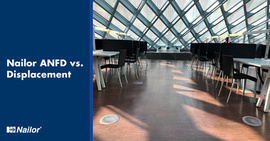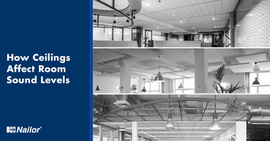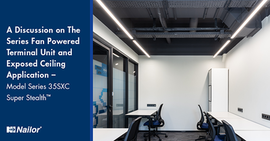Nailor Airwaves Archive

Both Underfloor Air Distribution (UFAD) and Displacement Air Distribution are well defined in the 2021 ASHRAE Handbook Applications, Chapter 20, Space Air Diffusion. Generally, the idea for UFAD is to have a well-mixed lower level in the occupied space up to about 4.5 feet above the floor. From the thermocline at 4.5 feet to about 3 to 5 inches from the ceiling is a stratified space. Above the Stratified space, the upper region is the warmest and most polluted air in the room. It is being induced into the return air space or ducts at the ceiling and returned to the air handler. UFAD diffusers are typically designed to mix the space air with the supply air very rapidly to eliminate any uncomfortable areas due to the colder air. Generally, the same amount of air as an overhead fully mixed… Read more...

Area SourceWhen a room has a full ceiling stretching from wall to wall, the ceiling isolates the room from the area above the ceiling. Frequently that space above the ceiling is used for the return air path to the air handler. It is also used to mount mechanical equipment, plumbing, electric supplies and lighting. The open space is a separate space from the occupied area below. As such, sound that is generated in the return plenum spreads throughout the plenum and produces an area sound source that emanates across the entire ceiling somewhat evenly into the space below. AHRI Standard 885 describes how the sound from the mechanical equipment is affected as it enters the occupied space. Sound readings in the occupied space will be nearly constant across the entire floor area in the room.… Read more...

Acoustical Privacy in Exposed Ceiling Applications
Architectural designs with open offices and acoustical tile suspended ceilings often have relatively low sound level requirements to achieve “acoustical privacy” for the occupants. The acoustical design goals include controlling occupied space noise levels so that it is neither so loud as to interfere with speech or too quiet so that all intermittent sounds become a distraction. Acoustical specifications have included several measures including Octave Band Sound levels, NC (Noise Criteria, based on a tangent maximum referenced to a chart of average human response), RC (Room Criteria, the average is 500 thru 2000 Hz bands and a letter representing high or low frequency predominance) and DbA (an “A Scale” weighted Log Sum in all bands).… Read more...